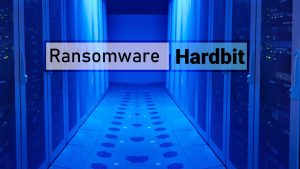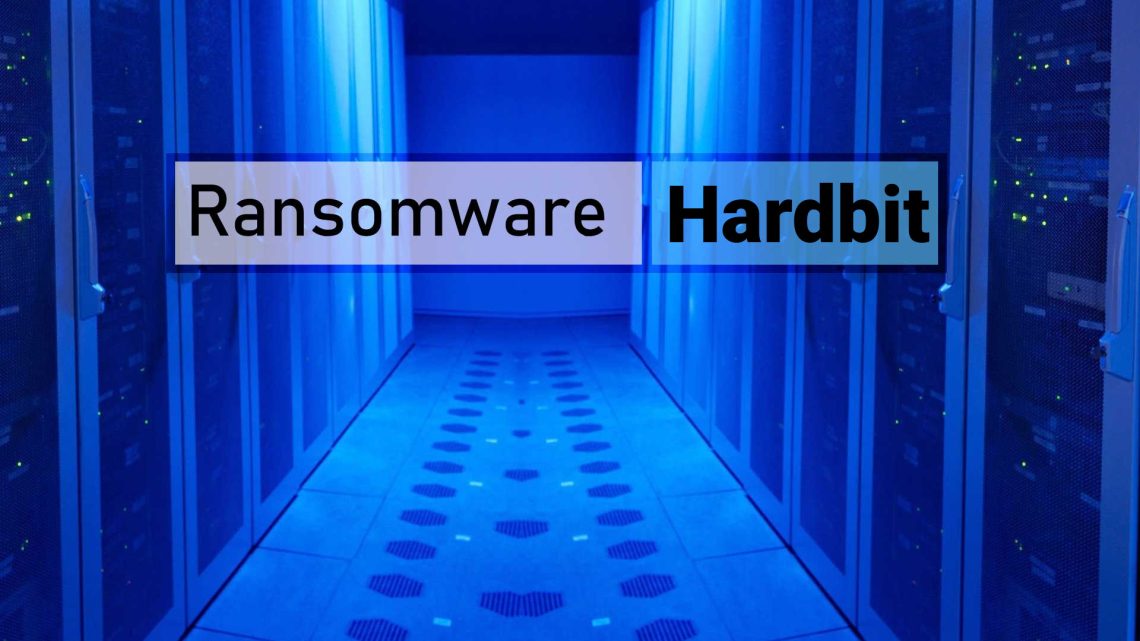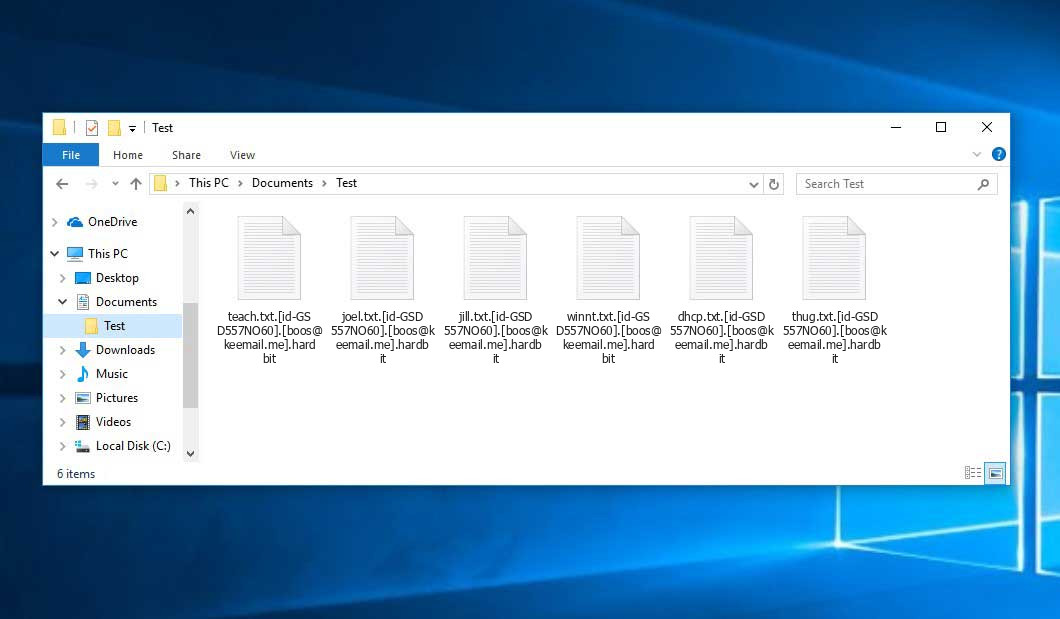The Hardbit virus falls within the ransomware type of malicious agent. A harmful program of such sort encrypts all user’s data on the computer (images, documents, excel sheets, music, videos, etc) and adds its specific extension to every file, creating the How To Restore Your Files.txt files in every folder with the encrypted files.
What is Hardbit virus?
☝️ A scientifically correct designation for the Hardbit is “a ransomware-type infection”.
The renaming will be executed according to the following pattern: [id-xxxxxxx].[contact_email].hardbit. In the process of encryption, a file entitled, for example, “report.docx” will be altered to “report.docx.[id-GSD557NO60].[boos@keemail.me].hardbit”.
In each folder containing the encoded files, a How To Restore Your Files.txt text document will be found. It is a ransom money note. Therein you can find information about the ways of paying the ransom and some other information. The ransom note most probably contains a description of how to purchase the decryption tool from the ransomware developers. You can get this decryptor after contacting boos@keemail.me through email. That is it.
Hardbit overview:
| Name | Hardbit Virus |
| Extension | .hardbit |
| Ransomware note | How To Restore Your Files.txt |
| Contact | boos@keemail.me |
| Detection | Ransom:Win32/StopCrypt.ST!MTB, NSIS:AdwareX-gen [Adw], Ransom:Win32/StopCrypt.SS!MTB |
| Symptoms | Your files (photos, videos, documents) have a .hardbit extension and you can’t open them. |
| Fix Tool | See If Your System Has Been Affected by Hardbit virus |
The How To Restore Your Files.txt file coming in package with the Hardbit malware states the following:
_ _ _____ ___ ___ ___ _ _____ | | ( )| _ || _ \\ ( _ \\ ( _ \\ (_)(_ _) | |_| || (_) || (_) )| | ) || (_) )| | | | | _ || _ || / | | | || _ ( | | | | | | | || | | || |\\ \\ | |_) || (_) )| | | | (_) |_||_| |_||_| (_)(____/ (____/ |_| |_| ¦¦¦¦¦HARDBIT RANSOMWARE¦¦¦¦¦ ---- what happened? All your files have been stolen and then encrypted. But don\'t worry, everything is safe and will be returned to you. ---- How can I get my files back? You have to pay us to get the files back. We don\'t have bank or paypal accounts, you only have to pay us via Bitcoin. ---- How can I buy bitcoins? You can buy bitcoins from all reputable sites in the world and send them to us. Just search how to buy bitcoins on the internet. Our suggestion is these sites. >>hxxps://www.binance.com/enhxxps://www.coinbase.com/hxxps://localbitcoins.com/hxxps://www.bybit.com/en-US/<>boos@keemail.meboos@cyberfear.com<;< ---- How will the payment process be after payment? After payment, we will send you the decryption tool along with the guide and we will be with you until the last file is decrypted. ---- What happens if I don\'t pay you? If you don\'t pay us, you will never have access to your files because the private key is only in our hands. This transaction is not important to us, but it is important to you, because not only do you not have access to your files, but you also lose time. And the more time passes, the more you will lose and If you do not pay the ransom, we will attack your company again in the future. ---- What are your recommendations? - Never change the name of the files, if you want to manipulate the files, make sure you make a backup of them. If there is a problem with the files, we are not responsible for it. - Never work with intermediary companies, because they charge more money from you. For example, if we ask you for 50,000 dollars, they will tell you 55,000 dollars. Don\'t be afraid of us, just call us. ---- Very important! For those who have cyber insurance against ransomware attacks. Insurance companies require you to keep your insurance information secret, this is to never pay the maximum amount specified in the contract or to pay nothing at all, disrupting negotiations. The insurance company will try to derail negotiations in any way they can so that they can later argue that you will be denied coverage because your insurance does not cover the ransom amount. For example your company is insured for 10 million dollars, while negotiating with your insurance agent about the ransom he will offer us the lowest possible amount, for example 100 thousand dollars, we will refuse the paltry amount and ask for example the amount of 15 million dollars, the insurance agent will never offer us the top threshold of your insurance of 10 million dollars. He will do anything to derail negotiations and refuse to pay us out completely and leave you alone with your problem. If you told us anonymously that your company was insured for $10 million and other important details regarding insurance coverage, we would not demand more than $10 million in correspondence with the insurance agent. That way you would have avoided a leak and decrypted your information. But since the sneaky insurance agent purposely negotiates so as not to pay for the insurance claim, only the insurance company wins in this situation. To avoid all this and get the money on the insurance, be sure to inform us anonymously about the availability and terms of insurance coverage, it benefits both you and us, but it does not benefit the insurance company. Poor multimillionaire insurers will not starve and will not become poorer from the payment of the maximum amount specified in the contract, because everyone knows that the contract is more expensive than money, so let them fulfill the conditions prescribed in your insurance contract, thanks to our interaction.
In the image below, you can see what a directory with files encrypted by the Hardbit looks like. Each filename has the “.hardbit” extension added to it.
How did my machine catch Hardbit ransomware?
There is a huge number of possible ways of ransomware injection.
There are currently three most popular methods for evil-doers to have the Hardbit virus settled in your digital environment. These are email spam, Trojan injection and peer networks.
If you open your inbox and see letters that look like familiar notifications from utility services providers, postal agencies like FedEx, Internet providers, and whatnot, but whose addresser is unknown to you, be wary of opening those letters. They are most likely to have a malicious item attached to them. So it is even riskier to open any attachments that come with letters like these.
Another option for ransom hunters is a Trojan file scheme1. A Trojan is a program that gets into your computer disguised as something different. For example, you download an installer for some program you need or an update for some service. However, what is unboxed turns out to be a harmful program that compromises your data. Since the update file can have any title and any icon, you’d better be sure that you can trust the resource of the stuff you’re downloading. The optimal thing is to use the software companies’ official websites.
As for the peer file transfer protocols like torrents or eMule, the threat is that they are even more trust-based than the rest of the Web. You can never guess what you download until you get it. So you’d better be using trustworthy websites. Also, it is reasonable to scan the directory containing the downloaded items with the antivirus as soon as the downloading is finished.
How do I get rid of the Hardbit virus?
It is important to inform you that besides encrypting your files, the Hardbit virus will probably install the Azorult Spyware on your computer to seize your credentials to various accounts (including cryptocurrency wallets). The mentioned program can derive your logins and passwords from your browser’s auto-filling data.
Sometimes tamperers would unblock several of your files to prove that they do have the decryption program. As Hardbit virus is a relatively new ransomware, security software developers have not yet found a method to undo its work. However, the anti-ransomware instruments are frequently updated, so the effective countermeasure may soon be available.
Of course, if the malefactors do the job of encrypting victim’s critical data, the desperate person will probably comply with their demands. Despite that, paying to criminals gives no guarantee that you’re getting your data back. It is still dangerous. After getting the money, the racketeers may send a wrong decryption key to the injured party. There were reports about malefactors simply vanishing after getting the money without even bothering to reply.
The optimal countermeasure to ransomware is to have aan OS restore point or the copies of your critical files in the cloud storage or at least on an external disk. Surely, that might be not enough. The most crucial thing could be that file you were working upon when it all went down. Nevertheless, it is something. It is also wise to scan your drives with the anti-malware utility after the system restoration.
Hardbit is not the only ransomware of its kind, since there are other specimens of ransomware out there that act in the same manner. Examples of those are Oflg, Ofww, Aawt, and some others. The two basic differences between them and the Hardbit are the ransom amount and the encoding method. The rest is the same: files become encrypted, their extensions altered, ransom notes appear in each folder containing encrypted files.
Some lucky users were able to decode the arrested files with the help of the free software provided by anti-ransomware specialists. Sometimes the criminals mistakenly send the decryption code to the wronged in the ransom note. Such an extraordinary fail allows the user to restore the files. But of course, one should never rely on such a chance. Make no mistake, ransomware is a bandits’ instrument to lay their hands on the money of their victims.
How do I avert ransomware infiltration?
Hardbit ransomware has no superpower, neither does any similar malware.
You can protect your computer from ransomware attack within several easy steps:
- Ignore any emails from unknown mailers with strange addresses, or with content that has likely no connection to something you are waiting for (how can you win in a lottery without even taking part in it?). In case the email subject is likely something you are expecting, scrutinize all elements of the dubious email with caution. A fake letter will always have a mistake.
- Do not use cracked or unknown software. Trojan viruses are often spreaded as an element of cracked software, possibly as a “patch” preventing the license check. But dubious programs are difficult to tell from trustworthy ones, as trojans may also have the functionality you need. You can try to find information about this software product on the anti-malware forums, but the optimal way is not to use such software.
- And to be sure about the safety of the objects you downloaded, use GridinSoft Anti-Malware. This program will be a perfect defense for your personal computer.
Reasons why I would recommend GridinSoft2
There is no better way to recognize, remove and prevent ransomware than to use an anti-malware software from GridinSoft3.
Download Removal Tool.
You can download GridinSoft Anti-Malware by clicking the button below:
Run the setup file.
When setup file has finished downloading, double-click on the setup-antimalware-fix.exe file to install GridinSoft Anti-Malware on your system.

An User Account Control asking you about to allow GridinSoft Anti-Malware to make changes to your device. So, you should click “Yes” to continue with the installation.

Press “Install” button.

Once installed, Anti-Malware will automatically run.

Wait for the Anti-Malware scan to complete.
GridinSoft Anti-Malware will automatically start scanning your PC for Hardbit infections and other malicious programs. This process can take a 20-30 minutes, so I suggest you periodically check on the status of the scan process.

Click on “Clean Now”.
When the scan has finished, you will see the list of infections that GridinSoft Anti-Malware has detected. To remove them click on the “Clean Now” button in right corner.

Frequently Asked Questions
🤔 Are the “.hardbit” files accessible?
Negative. That is why ransomware is so frustrating. Until you decode the “.hardbit” files you will not be able to access them.
🤔 What should I do to make my files accessible as fast as possible?
If the “.hardbit” files contain some really important information, then you probably have them backed up. If not, there is still a function of System Restore but it needs a Restore Point to be previously saved. All other solutions require time.
🤔 You have advised using GridinSoft Anti-Malware to get rid of the Hardbit virus. Does it mean that all my files, currently encrypted, will be removed too?
No way! Unlike the ransomware program itself, the encrypted files do not jeopardize your system.
With the help of GridinSoft Anti-Malware, you can clean your PC off the actual threats. The ransomware that has infected your device is probably still functional and launching checks periodically to encrypt any new files you might create on your PC after the attack. As it has been said above, the Hardbit ransomware does not come alone. It installs backdoors and keyloggers that can steal your account credentials and provide criminals with easy access to your PC in the future.
🤔 What should I do if the Hardbit malware has blocked my computer and I can’t get the activation code.
If that happened, you need to have a flash memory card with a previously installed Trojan Killer. Use Safe Mode to perform the procedure. The point is that the ransomware starts automatically as the system boots and encodes any new files created or imported into your machine. To suppress this process – use Safe Mode, which allows only the vital programs to run automatically. Consider reading our manual on booting Windows in Safe Mode.
🤔 What could help the situation right now?
Many of the blocked files might still be at your disposal
- If you sent or received your critical files by email, you could still download them from your online mailbox.
- You may have shared photographs or videos with your friends or relatives. Simply ask them to post those images back to you.
- If you have initially got any of your files from the Web, you can try doing it again.
- Your messengers, social networks pages, and cloud drives might have all those files too.
- It might be that you still have the needed files on your old computer, a portable device, cellphone, external storage, etc.
HINT: You can use data recovery utilities4 to retrieve your lost information since ransomware blocks the copies of your files, removing the authentic ones. In the tutorial below, you can learn how to use PhotoRec for such a recovery, but remember: you can do it only after you remove the virus with an anti-malware program.
Also, you can contact the following governmental fraud and scam sites to report this attack:
- In the United States: On Guard Online;
- In Canada: Canadian Anti-Fraud Centre;
- In the United Kingdom: Action Fraud;
- In Australia: SCAMwatch;
- In New Zealand: Consumer Affairs Scams;
- In France: Agence nationale de la sécurité des systèmes d’information;
- In Germany: Bundesamt für Sicherheit in der Informationstechnik;
- In Ireland: An Garda Síochána;
To report the attack, you can contact local executive boards. For instance, if you live in USA, you can have a talk with FBI Local field office, IC3 or Secret Service.
I need your help to share this article.
It is your turn to help other people. I have written this article to help users like you. You can use the buttons below to share this on your favorite social media Facebook, Twitter, or Reddit.
Brendan SmithHow to Remove HARDBIT Ransomware & Recover PC

Name: HARDBIT Virus
Description: HARDBIT Virus is a ransomware-type infections. This virus encrypts important personal files (video, photos, documents). The encrypted files can be tracked by a specific .hardbit extension. So, you can't use them at all.
Operating System: Windows
Application Category: Virus
User Review
( votes)References
- You can read more on Trojans, their use and types in the Trojan-dedicated section of GridinSoft official website.
- GridinSoft Anti-Malware Review from HowToFix site: https://howtofix.guide/gridinsoft-anti-malware/
- More information about GridinSoft products: https://gridinsoft.com/comparison
- Here’s the list of Top 10 Data Recovery Software Of 2023.



